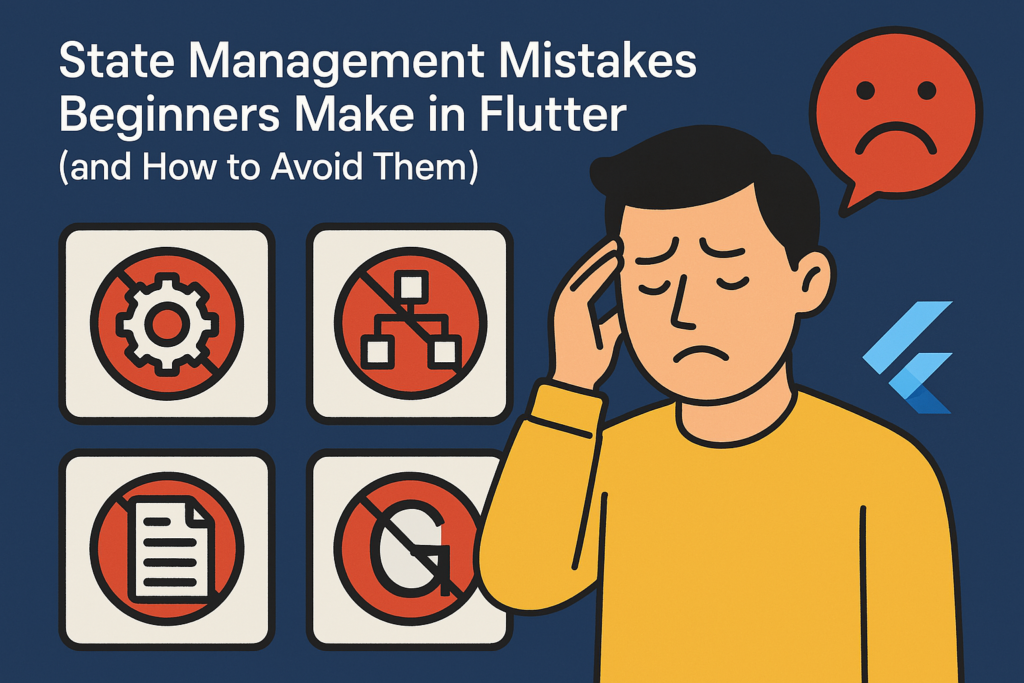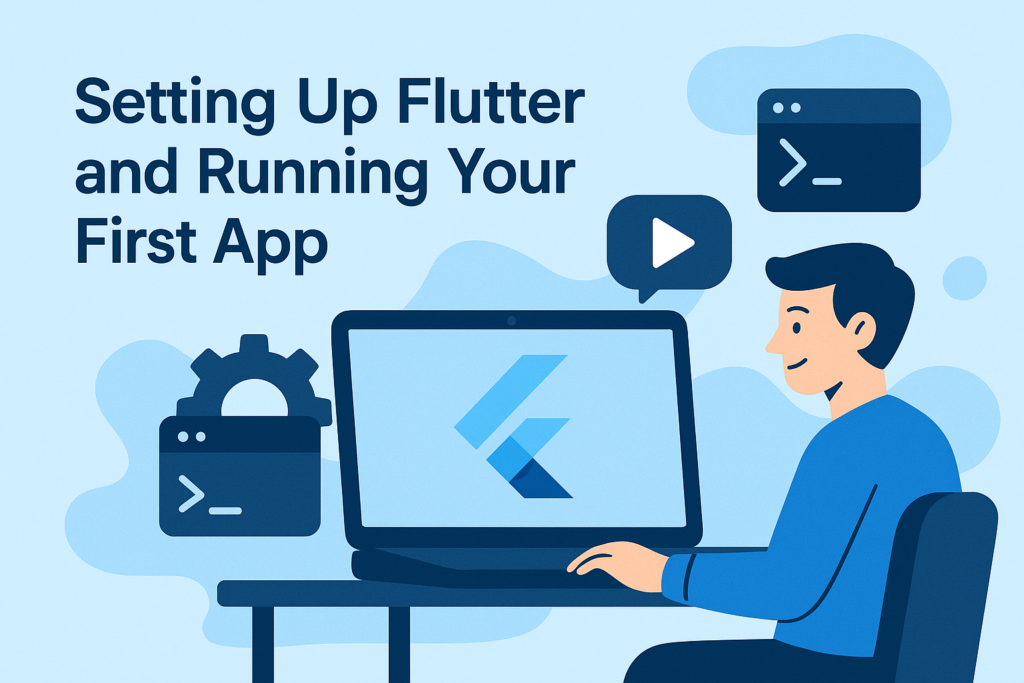
State management is one of the most important concepts in Flutter development—but it’s also one of the trickiest to get right. Beginners often run into subtle (and sometimes serious) issues when managing state, which can lead to performance problems, confusing bugs, or unmaintainable code. In this guide, we’ll break down the most common Flutter state management mistakes and show you how to avoid them, with real solutions that make your apps cleaner and more scalable. Understanding flutter state management mistakes can save a lot of troubles in your development process.
1. ❌ Using setState Everywhere
The mistake:
Beginners often rely entirely on setState() to manage state, even when the app grows beyond a single screen or widget.
Why it’s a problem:setState only updates the widget it’s called in. This becomes hard to manage when multiple widgets need access to shared state.
✅ The fix:
Use a state management solution like Provider, Riverpod, or BLoC for shared/global state. Save setState for small, local state changes only.
2. ❌ Updating the Entire UI for Small Changes
The mistake:
Using setState() or rebuilding entire widgets when only one value changes.
Why it’s a problem:
Unnecessary rebuilds = wasted resources and lag, especially on lower-end devices.
✅ The fix:
Wrap only the part of the widget tree that needs to update. Use Selector (Provider), ConsumerWidget (Riverpod), or BlocBuilder to rebuild only what matters.
3. ❌ Not Separating Business Logic from UI
The mistake:
Handling logic (like API calls or state changes) directly inside widgets.
Why it’s a problem:
Hard to test, hard to scale, and leads to spaghetti code.
✅ The fix:
Move logic into ViewModels, Controllers, or BLoCs. Keep your UI widgets focused on displaying data, not managing it.
4. ❌ Choosing the Wrong State Management Tool
The mistake:
Jumping into a complex solution (like BLoC or Riverpod) for a very simple app—or sticking to setState when the app clearly needs more structure.
Why it’s a problem:
Overkill or underkill leads to frustration and messy code.
✅ The fix:
Choose the right tool for the job:
setState: local, one-widget logicProvider: basic shared stateRiverpod: advanced, testable, scalableBLoC: structured, event-driven logic
5. ❌ Not Understanding Widget Rebuilds
The mistake:
Beginners often rebuild widgets unnecessarily or assume state updates when they don’t.
Why it’s a problem:
This leads to bugs like UI not updating, incorrect values, or duplicated events.
✅ The fix:
Learn how widget rebuilding works in Flutter. Use debugPrint() or tools like Flutter DevTools to trace rebuilds. Avoid anonymous functions in build() when possible.
6. ❌ Forgetting to Dispose Controllers
The mistake:
Forgetting to call .dispose() on controllers, listeners, or subscriptions.
Why it’s a problem:
Memory leaks, crashes, and unexpected behavior over time.
✅ The fix:
Always dispose of streams, TextEditingControllers, AnimationControllers, etc., inside dispose() in StatefulWidget.
7. ❌ Mixing UI State with App State
The mistake:
Storing temporary UI state (e.g., scroll position, animation values) inside your global app state.
Why it’s a problem:
Bloats your app state and causes unnecessary rebuilds.
✅ The fix:
Keep transient UI state inside widgets, and use global state only for shared app-wide data.
Final Thoughts
Managing state in Flutter doesn’t have to be confusing—but you do need the right mindset. Avoiding these beginner mistakes will help you write cleaner, scalable, and bug-free apps.
Pick the right tools, separate concerns, and be mindful of rebuilds. Once you get the hang of it, Flutter’s state management becomes one of its biggest strengths.



